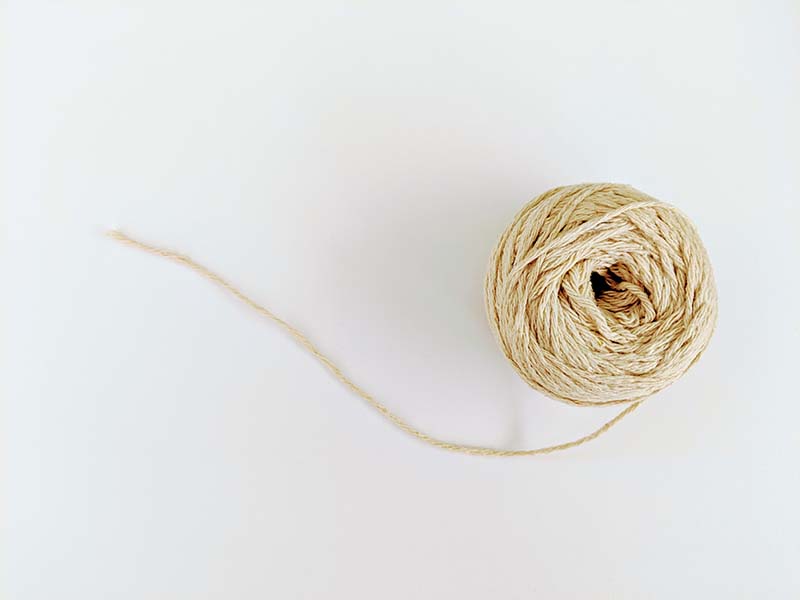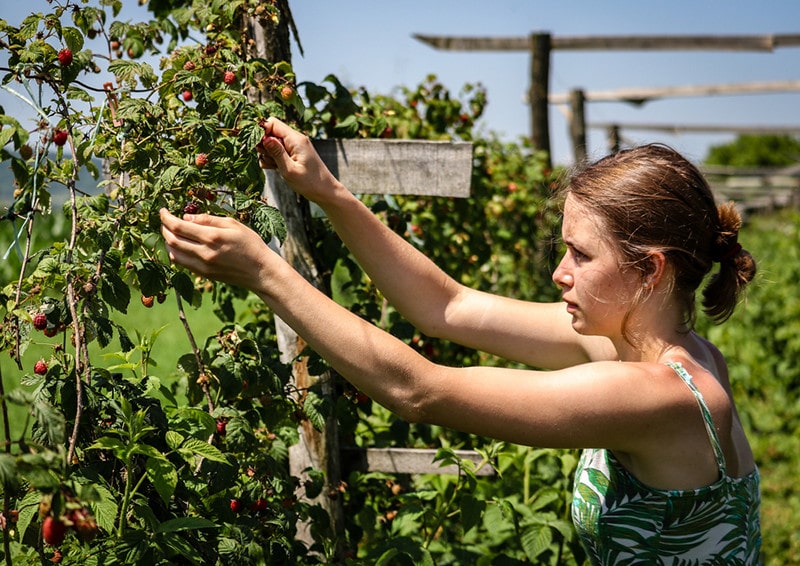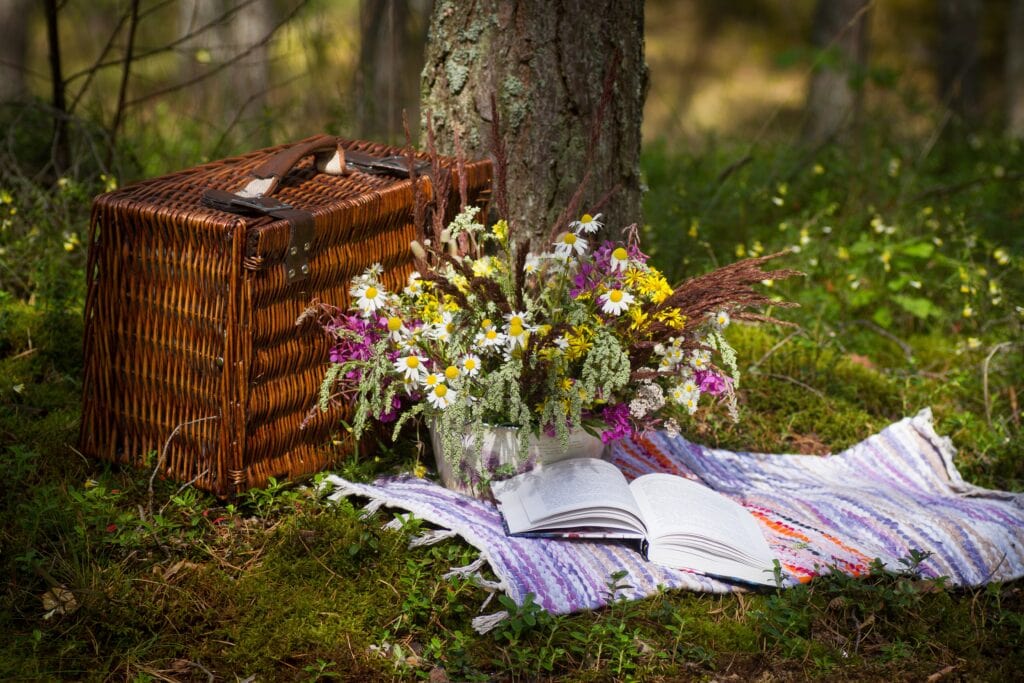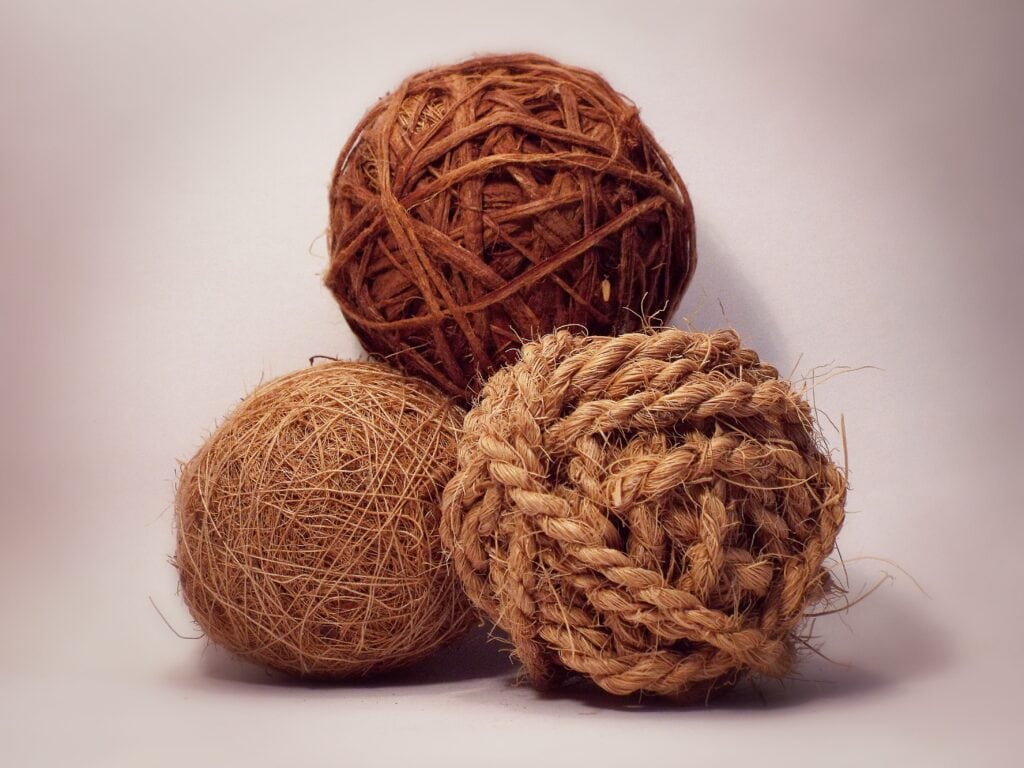How to Use Garden Twine to Help Your Plants Grow: 4 Tips & Tricks
-
Pete Ortiz
- Last updated:

While gardening, keeping the various vines under control can be challenging, especially for plants that need tying to stakes. Thankfully, garden twine come in handy when growing your fruits, vegetables, and herbs. They are lightweight yet strong enough to handle most of your plants in the garden.
Some uses of garden twine include tying up plants that bend over, holding them upright, and securing plant stakes. In this article, we cover the various ways of using garden twine to help your plants grow better and give them the support they need.
 The 4 Tips & Tricks on How to Use Garden Twine to Help Your Plants Grow
The 4 Tips & Tricks on How to Use Garden Twine to Help Your Plants Grow
There are various ways to use garden twine to benefit the plants in your garden. We’ll look at several uses as well as the steps involved.
1. Making a Trellis With Garden Twine

A trellis is a structure that supports climbing plants. It is used in horticulture and landscape design, especially for plants that need extra support to grow such as tomatoes and cucumbers.
You can also use them to train vines, such as honeysuckle. If you have a few minutes and some twine, you can follow the steps below.
- Fix two stakes into the ground near the plant you want to support. Ensure they’re as tall as you want your trellis to be.
- Fasten the garden twine between the two fixed stakes and pull them tight.
- Add more twine every six inches from the bottom of the stakes. With this, you’ll create a ladder your plants will use for support. The durability of the gardening twine you use depends on the plant’s growing duration. Some plants don’t take long to grow.
2. Staking Using Garden Twine
One of the more popular uses for garden twine is to stake plants. Staking will keep them upright and prevent them from falling over. As a bonus, it’ll also make your garden look more organized.
Staking is ideal for plants like tomatoes, cucumbers, and beans. They grow tall and need support to grow up rather than out.
- Fix a stake into the ground close to the plant you’re supporting.
- Fasten the plant to the stake gently using the garden twine. Make sure it’s not too tight.
- If loosening it isn’t enough, add one more stake. Inspect the plant frequently if you fasten it tightly. Loosen it if need be.
- Add more twine higher up as it grows tall.
3. Use Garden Twine to Hang Plants & Flower Baskets

Plants that benefit from this include garlic, herbs, and onions. Hanging plant baskets will create more garden space to plant other plants. With garden twine, you can turn any container into a hanging one.
It’s the perfect project for you if you want to add color and interest to your yard. All you need is some garden twine, a few planters, flower baskets, and a bit of creativity. Here’s how you do it:
- Begin by hanging a length of garden twine horizontally.
- Then, use small garden twine lengths to hang each flower or plant basket vertically from the primary horizontal twine.
4. Lay Out Plants in Straight Rows Using Garden Twine
One of the best ways to plant a vegetable garden is using straight rows. It makes it easier to track where everything is and keeps weeds at bay. Using gardening twine to mark out your rows is an excellent time-saving trick. It works well for small gardens.
Ensure you set up the garden twine after planting seeds. This way, you won’t step on the plants as they sprout. You can remove the garden twine later if your plants sprouted in a straight line.
- Insert stakes at the corners of the garden, making sure they stick into the ground.
- Fasten a garden twine length between the stakes. Ensure the garden twine sits above the ground.
- Repeat the procedure, adding as many stakes as you can. This way, you’ll form a grid of garden twine in your garden.
Types of Garden Twine You Can Use
Choosing the right garden twine for your next project can seem overwhelming with all the options available. The best way to know which is best for you is to understand what each twine is used for and its strengths and weaknesses.
- Hemp Twine: Hemp twine is made from hemp plants. It’s eco-friendly and biodegradable as it’s made from plants, not plastics or other synthetic materials. This twine is not only strong and durable, but also flexible such that it doesn’t break easily. It won’t rot like some other types of garden twine. It is an excellent choice for tying up plants or hanging baskets from hooks or railings around your garden. Hemp twine is also resistant to pests and insects. You don’t have to worry about pests chewing through your plants or damaging them.
- Sisal Twine: Sisal is a form of agave and is used to make sisal rope. It is often used as garden twine due to its strength and durability, and tensile strength. The material is soft and easy to work with. The most common uses for sisal twine include tying up plants planted in the ground such as tomatoes, peppers, and squash. You can also use it to make decorative bows on your plants or around your garden beds or containers. Sisal twine also has other uses around your garden. You can use it to tie up plants, hang bird feeders, or wind chimes from trees. You can use it to wrap pots and planters in decorative ways. It will look great against any color scheme you choose for your garden or yard.
- Jute Twine: Jute twine is made from jute fibers. They’re harvested from plants in India, China, and Bangladesh. It’s durable and can hold up heavy loads without breaking or snapping like other types of string. Jute has been used for centuries to make rope and twine. It’s an excellent choice for garden twine because it’s biodegradable and naturally resistant to rot and mildew. The only downside is that it’s not easy to work with. So, you’ll need to learn how to tie knots to use this garden twine on your plants.

Factors to Consider When Buying Garden Twine
When shopping for garden twine, there are various factors to consider to ensure you’re buying the best. There is a difference in quality and price. So, a little research goes a long way.
- Price: If you’re looking for an affordable product, buy a large spool of garden twine. It will last longer and provide more value. If you are willing to spend more money, invest in a premium brand that uses recycled materials. It also prevents excess waste during production. Besides, ensure you don’t buy a garden twine that surpasses your budget. Buy one you’ll use for a long time rather than a short time.
- Purpose: Garden twine are designed for different purposes. For instance, some are for tying up plants while others are for creating an attractive display in your garden. The type of gardening project you want to do can determine what kind of twine you’ll need. For example, you need strong garden twine if you’re making a trellis for climbing plants. Ensure it can support the plant’s weight and also be flexible enough. This way, it doesn’t break under pressure.
- Color: There are many garden twine colors available. You can choose from green, white, or black. If you want a color that blends into your garden, go for green or white. If you want something that stands out more prominently in your garden, opt for black instead.
- Length: Buy a garden twine long enough to fit well in your garden or lawn. Longer garden twine are more versatile. However, they may cost more than shorter pieces because they have more uses. But they are ideal for tying up large plants without having to cut them into shorter lengths.
- Material: The material used to make garden twine should be strong and durable to withstand the weather conditions in your area. Some garden twine have a natural coating that protects them against water damage. Others are treated with chemicals that prevent them from rotting or decaying. Some are synthetic, and others are natural. Synthetic garden twine includes nylon, polypropylene, and acrylic. Natural garden twine comprise jute, cotton, silk, and flax.
 Conclusion
Conclusion
There are different uses for garden twine in the garden. It’s an excellent way to keep your garden neat and organized. Garden twine comes in different colors and lengths. So, it gives you more freedom and customization over your garden.
If you’re looking for ways to bring your garden to life this spring and summer, adding this simple plant helper to your setup might be just what you need. Used sparingly, it is an excellent tool for any gardener!
Featured Image Credit: Adam Valstar, Unsplash
Contents

 The 4 Tips & Tricks on How to Use Garden Twine to Help Your Plants Grow
The 4 Tips & Tricks on How to Use Garden Twine to Help Your Plants Grow